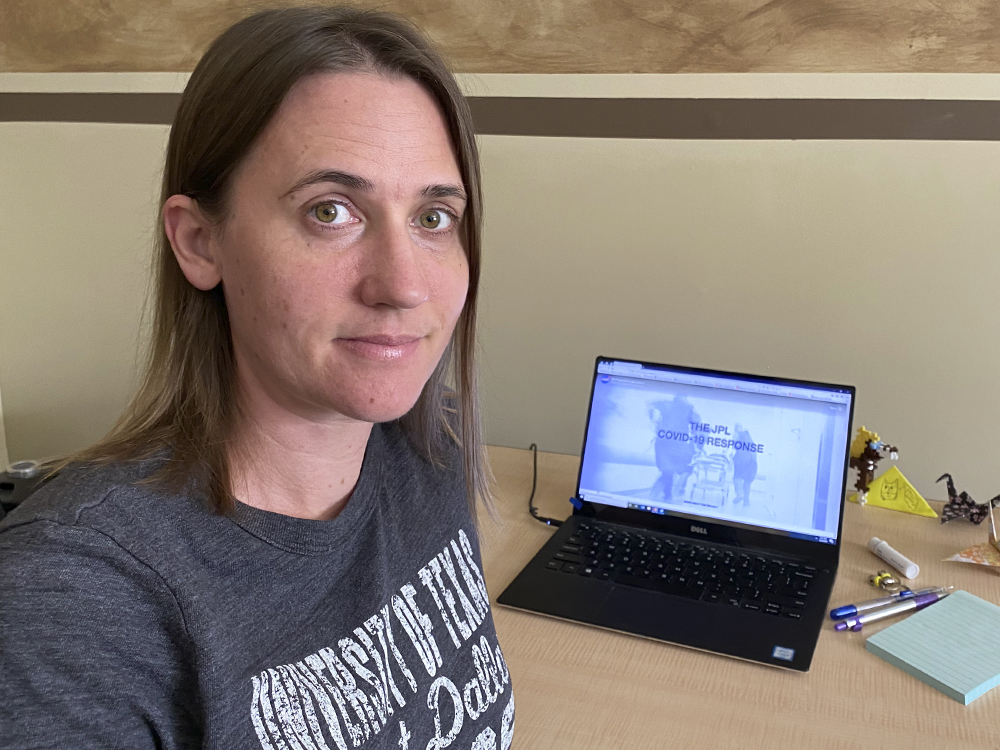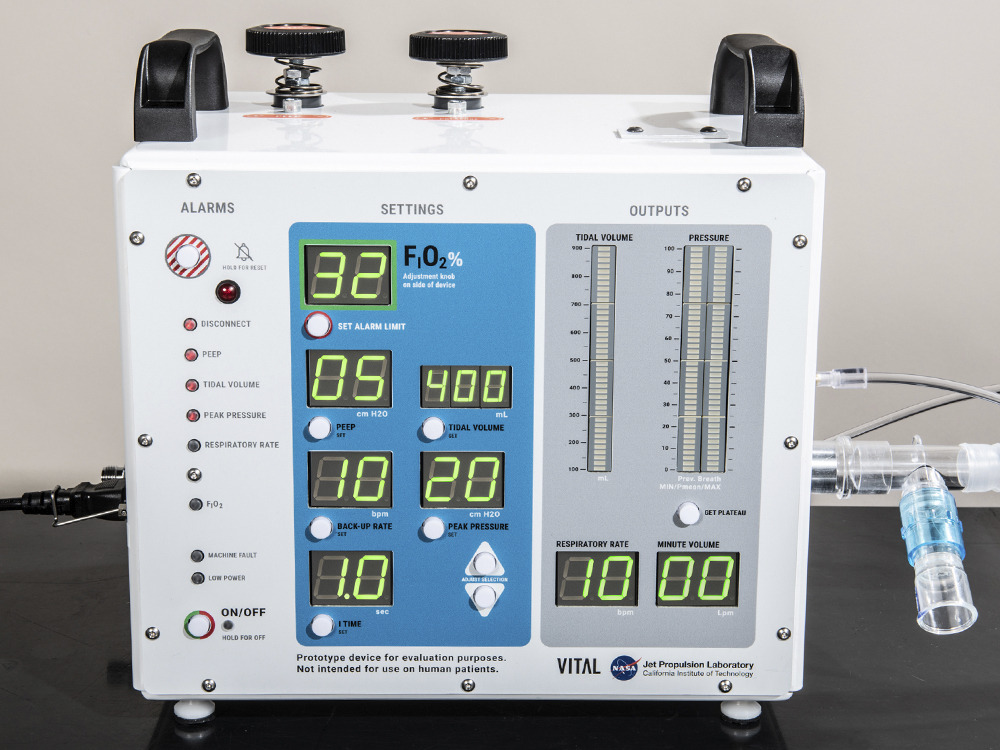Alumna Helps Develop New Ventilator for COVID-19 Patients
05.11.2020
 Dr. Stacey Boland BS’00
Dr. Stacey Boland BS’00
UT Dallas alumna Dr. Stacey Boland BS’00 is part of a team of dozens of NASA engineers that in just 37 days developed a new high-pressure ventilator to treat COVID-19 patients.
The device, called VITAL (Ventilator Intervention Technology Accessible Locally), was developed in March and April at NASA’s Jet Propulsion Laboratory in California to free up the nation’s limited supply of traditional ventilators so they could be used on patients with the most severe COVID-19 symptoms.
The prototype, designed for rapid mass production, was tested at the Icahn School of Medicine at Mount Sinai in New York City and in late April received Food and Drug Administration approval for emergency use. VITAL can be built faster and maintained more easily than a traditional ventilator, and its flexible design means it also can be modified for use in field hospitals, according to NASA.
Boland, a systems engineer at JPL since 2005, was the operations lead for VITAL. She was responsible for liaising with health care professionals to ensure their needs were met and that they could easily operate the ventilator. She also wrote the instruction manual on the fly.
 This is a front-facing view of VITAL (Ventilator Intervention Technology Accessible Locally), a ventilator designed and built by engineers at NASA’s Jet Propulsion Laboratory in Southern California. (Image credit: NASA/JPL-Caltech)
This is a front-facing view of VITAL (Ventilator Intervention Technology Accessible Locally), a ventilator designed and built by engineers at NASA’s Jet Propulsion Laboratory in Southern California. (Image credit: NASA/JPL-Caltech)
“On any given day, I’d be talking to doctors, nurses, respiratory therapists, mechanical engineers, electrical engineers, software engineers, project managers, our regulatory team and visual strategists, communicating across and translating between all of these different disciplines to keep us on the same page – all while working remotely,” Boland said. “It was an intense and amazing experience.”
Boland said there was no shortage of motivation for her on the project, including a personal connection – her sister and brother-in-law work at a Mississippi hospital.
“I think we all know people who work on the front lines in health care, and we also know people who are considered particularly vulnerable to COVID-19,” she said. “What was neat, though, is I could call or text my sister and ask her opinion about some aspect of the user interface when I needed to get quick feedback. I think it’s pretty safe to say this is the first time our professional lives have crossed!”
Boland earned her bachelor’s degree in physics from UT Dallas and her Master of Science and PhD in mechanical engineering from the California Institute of Technology. She currently is part of a team developing NASA’s Multi-Angle Imager for Aerosols (MAIA) instrument, which will characterize particulate matter in air pollution. Her husband and fellow Comet, Dr. Justin Boland BS’00, is also a JPL engineer.
–Amanda Siegfried



